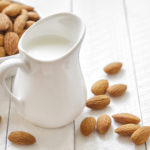Sodium

What is sodium?
It is a chemical element that makes up 40 percent of table salt (or sodium chloride) by weight. Salt is the number-one source in our diet.
Why is it necessary?
It plays a critical role in our bodies by helping regulate water balance, controlling muscle and nerve function, and keeping the circulatory system functioning properly. Our bodies require it to regulate blood pressure and protect against blood clotting. It also plays a role in the digestive system, helping to metabolize food.
What are the signs of a deficiency?
A deficiency is rare. Only those who engage in vigorous exercise in hot environments need be concerned about taking in extra sodium to compensate for the amount lost through perspiration.
How much, and what kind, does an adult need?
Adults need only about 1,500-2,000 mg of per day, although some research indicates 1,000 mg may be sufficient.
How much does a child need?
Children need only between 1,000 and 1,300 mg a day.
How do you get enough from foods?
It is very easy to obtain enough through your diet – too much, in fact: the average intake is five to six grams per day, or roughly five times the amount Dr. Weil recommends. Sodium content is high in processed foods such as snack foods, fast food, canned and frozen foods, lunch meats, and some condiments and foods that are pickled. Sodium in the form of sodium chloride exists naturally in virtually all foods, so intake requirements can be easily met by eating an otherwise healthful, varied diet of foods that have no salt added.
Are there any risks associated with too much?
Excess dietary sodium has been linked to a variety of health issues, ranging from fluid retention and circulatory problems to high blood pressure, heart, or kidney disease. People at risk for these problems may benefit from a low-sodium diet.
Are there any other special considerations?
Potassium and sodium balance each other – it is the ratio of sodium to potassium in the diet and in our systems that seems to affect blood pressure and kidney function more than sodium levels alone.









